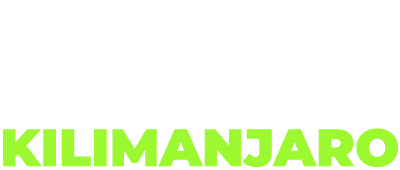[av_slideshow_full size=’featured’ min_height=’0px’ stretch=” control_layout=’av-control-default’ src=” attachment=” attachment_size=” position=’top left’ repeat=’no-repeat’ attach=’scroll’ conditional_play=” animation=’slide’ autoplay=’false’ interval=’5′ id=” custom_class=” av_uid=’av-k76oo2xd’]
[av_slide_full slide_type=’image’ id=’2479′ video=’https://’ mobile_image=” fallback_link=’https://’ title=” video_format=” video_ratio=’16:9′ caption_pos=’caption_bottom’ custom_title_size=” av-medium-font-size-title=” av-small-font-size-title=” av-mini-font-size-title=” custom_content_size=” av-medium-font-size=” av-small-font-size=” av-mini-font-size=” font_color=” custom_title=” custom_content=” heading_tag=” heading_class=” link_apply=” link=’lightbox’ link_target=” button_label=’Click me’ button_color=’light’ link1=’manually,https://’ link_target1=” button_label2=’Click me’ button_color2=’light’ link2=’manually,https://’ link_target2=” overlay_opacity=’0.5′ overlay_color=” overlay_pattern=” overlay_custom_pattern=”][/av_slide_full]
[/av_slideshow_full]
[av_heading heading=’How To Choose a Sleeping Bag for a Kilimanjaro Climb’ tag=’h1′ link=” link_target=” style=’blockquote modern-quote’ size=” subheading_active=” subheading_size=” margin=” padding=’10’ color=” custom_font=” custom_class=” id=” admin_preview_bg=” av-desktop-hide=” av-medium-hide=” av-small-hide=” av-mini-hide=” av-medium-font-size-title=” av-small-font-size-title=” av-mini-font-size-title=” av-medium-font-size=” av-small-font-size=” av-mini-font-size=”][/av_heading]
[av_one_full first min_height=” vertical_alignment=” space=” row_boxshadow=” row_boxshadow_color=” row_boxshadow_width=’10’ custom_margin=” margin=’0px’ mobile_breaking=” border=” border_color=” radius=’0px’ padding=’0px’ column_boxshadow=” column_boxshadow_color=” column_boxshadow_width=’10’ background=’bg_color’ background_color=” background_gradient_color1=” background_gradient_color2=” background_gradient_direction=’vertical’ src=” background_position=’top left’ background_repeat=’no-repeat’ highlight=” highlight_size=” animation=” link=” linktarget=” link_hover=” title_attr=” alt_attr=” mobile_display=” id=” custom_class=” aria_label=” av_uid=’av-6723p2′]
[av_textblock size=” av-medium-font-size=” av-small-font-size=” av-mini-font-size=” font_color=” color=” id=” custom_class=” av_uid=’av-k76u5wvq’ admin_preview_bg=”]
Mt. Kilimanjaro is also known as the roof of Africa. It reaches an altitude of 19,340 ft (5,895 m). The weather and temperature conditions vary drastically between the mountain’s lower slopes and its summit. During an ascent, temperatures can easily range between 80 and 20 degrees Fahrenheit.
Packing the correct sleeping bag is of vital importance on a Kilimanjaro climb. Trekkers will need a bag that can withstand changing temperatures and conditions. A well-suited bag helps to ensure a successful climb. An ill-suited one is almost asking for a miserable misadventure. So, the question begs: What sleeping bag works best?
Synthetic vs. Down
Both synthetic and down sleeping bags rated at 0 degrees Fahrenheit are recommended for a Kilimanjaro trek. If a person is a naturally cold sleeper, then a lower rated degree bag (or bag with liner) is recommended. Let’s look at a few important characteristics of each.
Synthetic mummy shape sleeping bags are often cheaper than their down counterpart. They also give better insulation when wet; and, they dry quicker and easier than down bags. Synthetic bags, however, tend to be heavier and larger when compared to downs.
[/av_textblock]
[av_image src=’https://barkingzebratreks.com/wp-content/uploads/2020/02/synthetic-sleeping-bag.png’ attachment=’2484′ attachment_size=’full’ copyright=” caption=” styling=” align=’center’ font_size=” overlay_opacity=’0.4′ overlay_color=’#000000′ overlay_text_color=’#ffffff’ animation=’no-animation’ hover=” appearance=” link=” target=” id=” custom_class=” av_element_hidden_in_editor=’0′ av_uid=’av-6kx2nu’ admin_preview_bg=”][/av_image]
[av_textblock size=” av-medium-font-size=” av-small-font-size=” av-mini-font-size=” font_color=” color=” id=” custom_class=” av_uid=’av-k76wrzmw’ admin_preview_bg=”]
Down mummy shape sleeping bags usually have the best warmth to weight ratio. They may not perform as well as a synthetic bag in wet conditions, but trekkers can always pack a waterproof sack to protect the bag from getting wet. Please also keep in mind that some companies do make down sleeping bags made out of hydrophobic down. This helps retain some vital insulation properties when a down bag becomes wet; and, it also aids in a faster drying process that is close to a synthetic bag.
[/av_textblock]
[av_image src=’https://barkingzebratreks.com/wp-content/uploads/2020/02/down-sleeping-bag.png’ attachment=’2475′ attachment_size=’full’ copyright=” caption=” styling=” align=’center’ font_size=” overlay_opacity=’0.4′ overlay_color=’#000000′ overlay_text_color=’#ffffff’ animation=’no-animation’ hover=” appearance=” link=” target=” id=” custom_class=” av_element_hidden_in_editor=’0′ av_uid=’av-3kvbsq’ admin_preview_bg=”][/av_image]
[av_textblock size=” av-medium-font-size=” av-small-font-size=” av-mini-font-size=” font_color=” color=” id=” custom_class=” av_uid=’av-k76wrzmw’ admin_preview_bg=”]
Bag Shape Matters
Let’s talk sleeping bag basics for a moment. Sleeping bags do not generate heat. Sleeping bags work by retaining a layer of warm air that a person generates around his body. This retention of warmth is what essentially keeps a climber warm at night. Differences in a sleeping bag’s shape will ultimately impact how much warmth gets retained.
There are two main shapes when it comes to sleeping bags – mummy and rectangular. Mummy shaped bags provide the most efficient insulation when compared to rectangular bags and are most preferred by our trekkers. Rectangular bags typically provide more space for a person to move around in. The added space might mean extra comfort and freedom, but it also means extra space that has to be heated to keep a trekker warm.
[/av_textblock]
[av_image src=’https://barkingzebratreks.com/wp-content/uploads/2020/02/rectangular-sleeping-bag.png’ attachment=’2483′ attachment_size=’full’ copyright=” caption=” styling=” align=’center’ font_size=” overlay_opacity=’0.4′ overlay_color=’#000000′ overlay_text_color=’#ffffff’ animation=’no-animation’ hover=” appearance=” link=” target=” id=” custom_class=” av_element_hidden_in_editor=’0′ av_uid=’av-2kk3m2′ admin_preview_bg=”][/av_image]
[av_textblock size=” av-medium-font-size=” av-small-font-size=” av-mini-font-size=” font_color=” color=” id=” custom_class=” av_uid=’av-k76wrzmw’ admin_preview_bg=”]
There are a host of sleeping bags available for those gearing up for a Mt. Kilimanjaro climb. Many will work well, while many will also fail miserably. When selecting the bag best for you, ensure that warmth and diversity is guaranteed. Important questions remain as to a bag’s shape and whether it’s one made of synthetics vs. down. In the end, the questions will best be answered by the specific type of your own body, sleeping habits and your budget. You may also want to purchase a synthetic sleeping bag liner, which can add between 15°F-25°F of additional warmth in your sleeping bag.
[/av_textblock]
[/av_one_full][av_hr class=’invisible’ icon_select=’yes’ icon=’ue808′ font=’entypo-fontello’ position=’center’ shadow=’no-shadow’ height=’50’ custom_border=’av-border-thin’ custom_width=’50px’ custom_margin_top=’30px’ custom_margin_bottom=’30px’ custom_border_color=” custom_icon_color=” id=” custom_class=” av_uid=’av-k76u9dhv’ admin_preview_bg=”]
[av_social_share title=’Share this entry’ buttons=’custom’ share_facebook=’aviaTBshare_facebook’ share_twitter=’aviaTBshare_twitter’ share_pinterest=’aviaTBshare_pinterest’ share_reddit=’aviaTBshare_reddit’ share_linkedin=’aviaTBshare_linkedin’ share_mail=’aviaTBshare_mail’ yelp_link=’https://www.yelp.com’ style=” alb_description=” id=” custom_class=” av_uid=’av-k76ub677′ admin_preview_bg=”]
[av_hr class=’invisible’ icon_select=’yes’ icon=’ue808′ font=’entypo-fontello’ position=’center’ shadow=’no-shadow’ height=’50’ custom_border=’av-border-thin’ custom_width=’50px’ custom_margin_top=’30px’ custom_margin_bottom=’30px’ custom_border_color=” custom_icon_color=” id=” custom_class=” av_uid=’av-k76u9dhv’ admin_preview_bg=”]
[av_comments_list av-desktop-hide=” av-medium-hide=” av-small-hide=” av-mini-hide=” alb_description=” id=” custom_class=” av_uid=’av-29znme’]
